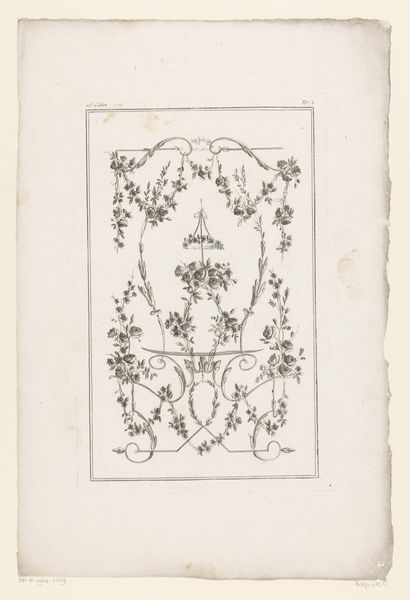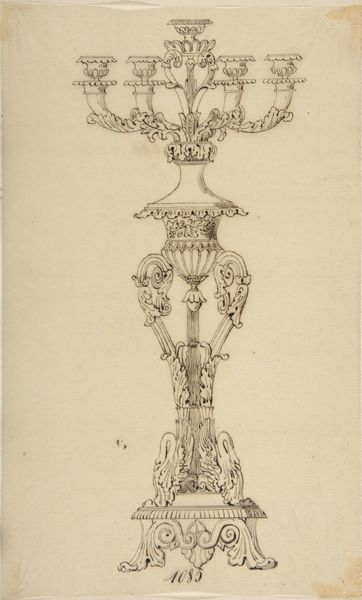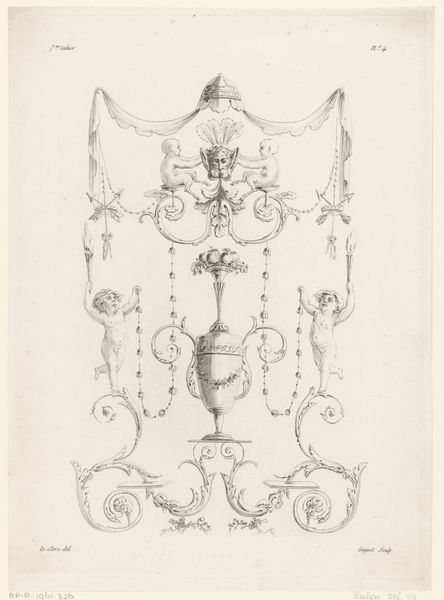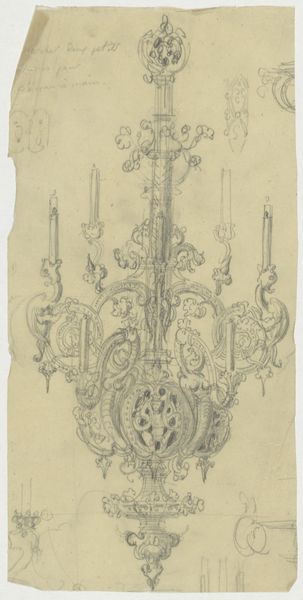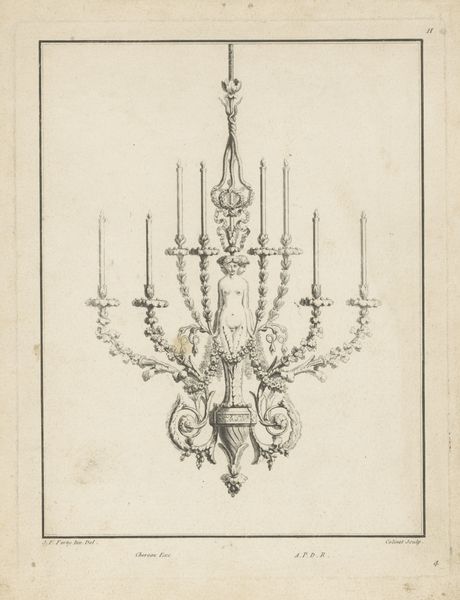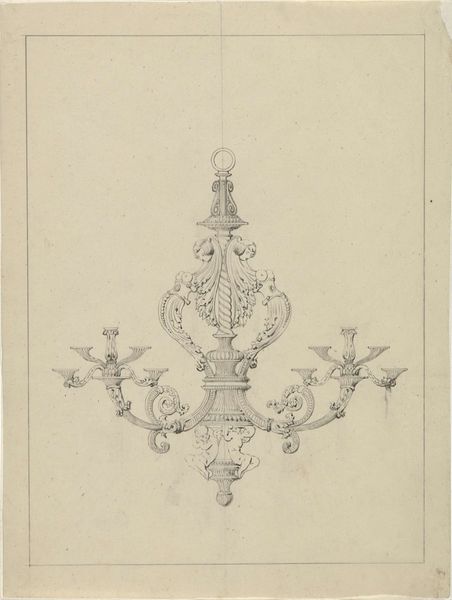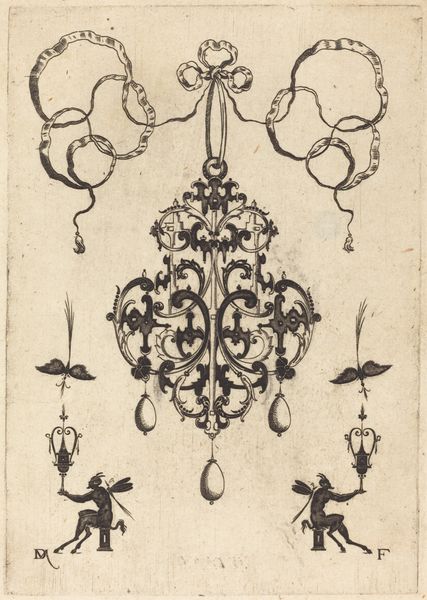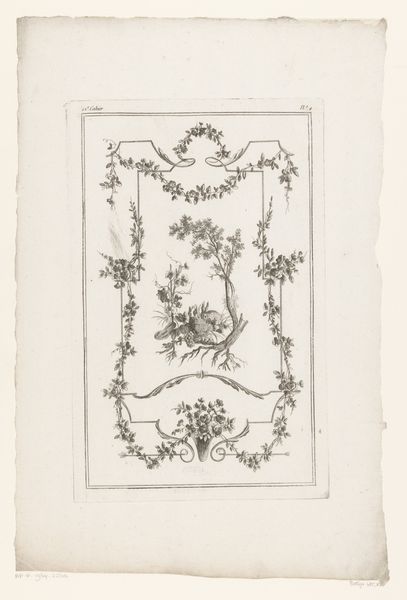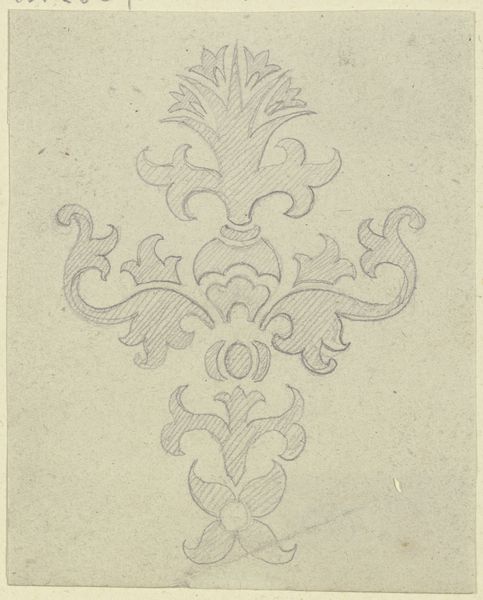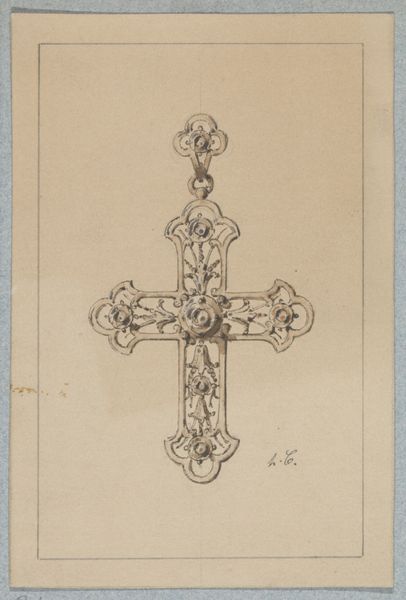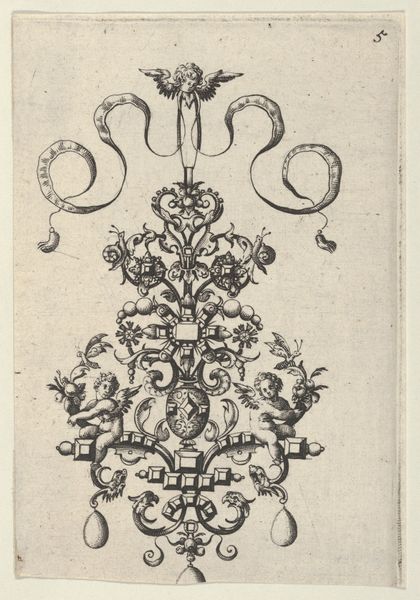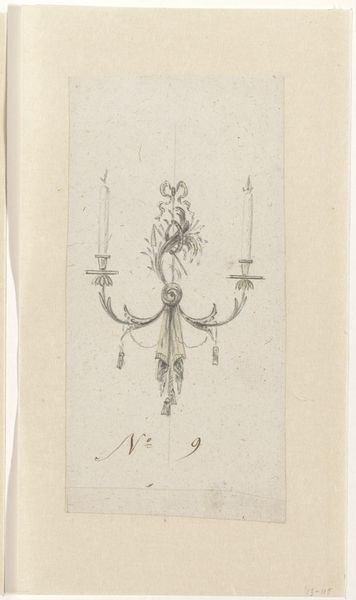
drawing, paper, ink
#
portrait
#
drawing
#
paper
#
ink
#
coloured pencil
Dimensions: height 93 mm, width 62 mm
Copyright: Rijks Museum: Open Domain
Curator: This detailed drawing, entitled "Two Designs for Pendants with Diamonds," was rendered by Henri Caméré sometime between 1864 and 1894, using ink and what appears to be colored pencil on paper. What are your first thoughts? Editor: My immediate impression is that it exudes a quiet elegance. The meticulous lines suggest refined taste, and you can almost feel the weight and opulence of these hypothetical jewels. But the use of simple drawing media creates an interesting tension. Curator: Precisely. And it is this tension that intrigues me from a materialist perspective. Caméré, though designing luxury items, has chosen readily available, rather humble materials: paper, ink, maybe colored pencil. This points to the labor involved in design, reducing precious gems to easily reproducible sketches. Editor: True, and from a critical perspective, the envisioned opulence prompts questions about access and labor exploitation during that period. Whose labor would extract these diamonds? And who could actually afford to wear these pendants? We should also note the centrality of bows in both pendant designs - a traditional emblem of feminine adornment. Curator: Absolutely, and that also highlights the craftsmanship inherent in high jewelry design. Caméré is not just envisioning the finished product, he's mediating the practical means through which precious stones might become a wearable reality. Editor: Speaking of labor, look at the minute detail. The intricate scrollwork, the faceted diamond renderings. There’s such deliberate construction involved. The pendants become less about simple display of wealth, and more like signifiers for a rigid class structure. Curator: Exactly. It emphasizes the controlled environment required to create and maintain this idealized, aristocratic image through jewelry and fine adornment. Each choice, from bow placement to gemstone size, reinforced a hierarchy and social standing. Editor: Thanks to the intersectional work Caméré's meticulous drawing prompts, we are able to more richly contemplate historical complexities—how an artist’s means of visualising material wealth and high adornment also reveal the workings of culture, society, and labor in its production. Curator: Indeed, by looking beyond the finished gem and examining the paper, ink and process, we've shed light on the machinery of desire and status which operates well beneath the glittering surface.
Comments
rijksmuseum about 2 years ago
⋮
In 1867 rich diamond deposits were discovered along the Orange River in South Africa. Diamonds subsequently flooded the European market. Their price went down, and they became more widely available and affordable than in previous centuries. Notice the three drop-shaped diamonds hanging from the pendant in the top drawing; this type of cut is called briolette. The cruciform pendant is set with brilliant-cut diamonds.
Join the conversation
Join millions of artists and users on Artera today and experience the ultimate creative platform.
